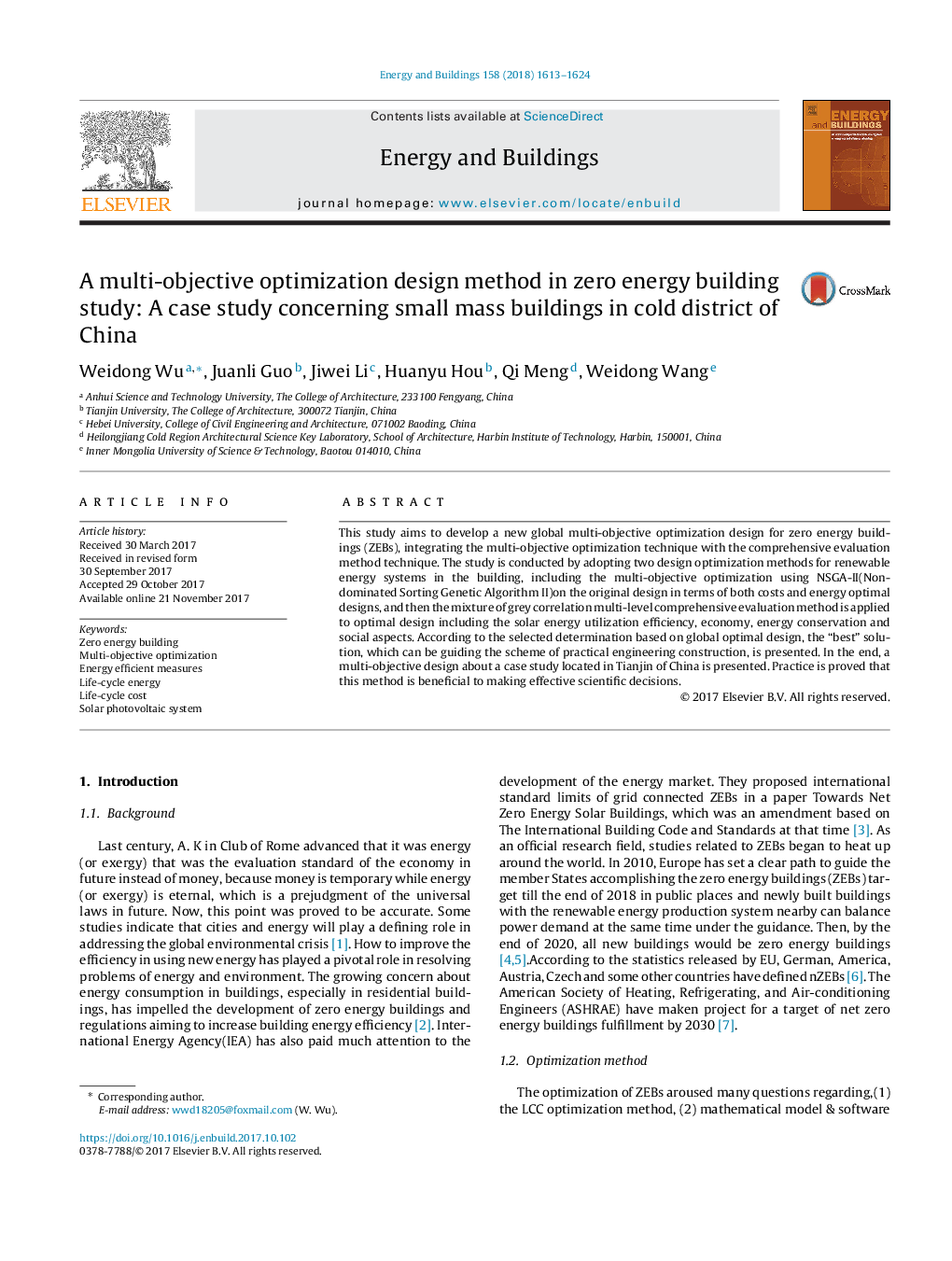ترجمه فارسی عنوان مقاله
یک روش طراحی بهینه سازی چند منظوره در مطالعات ساختمان انرژی صفر: یک مطالعه موردی در مورد ساختمان های کوچک انبوه در منطقه سرد چین
عنوان انگلیسی
A multi-objective optimization design method in zero energy building study: A case study concerning small mass buildings in cold district of China
| کد مقاله | سال انتشار | تعداد صفحات مقاله انگلیسی |
|---|---|---|
| 151163 | 2018 | 12 صفحه PDF |
منبع

Publisher : Elsevier - Science Direct (الزویر - ساینس دایرکت)
Journal : Energy and Buildings, Volume 158, 1 January 2018, Pages 1613-1624
ترجمه کلمات کلیدی
ساختمان انرژی صفر، بهینه سازی چند هدفه، اقدامات موثر انرژی، انرژی چرخه عمر، هزینه زندگی چرخه، سیستم فتوولتائیک خورشیدی،
کلمات کلیدی انگلیسی
Zero energy building; Multi-objective optimization; Energy efficient measures; Life-cycle energy; Life-cycle cost; Solar photovoltaic system;

